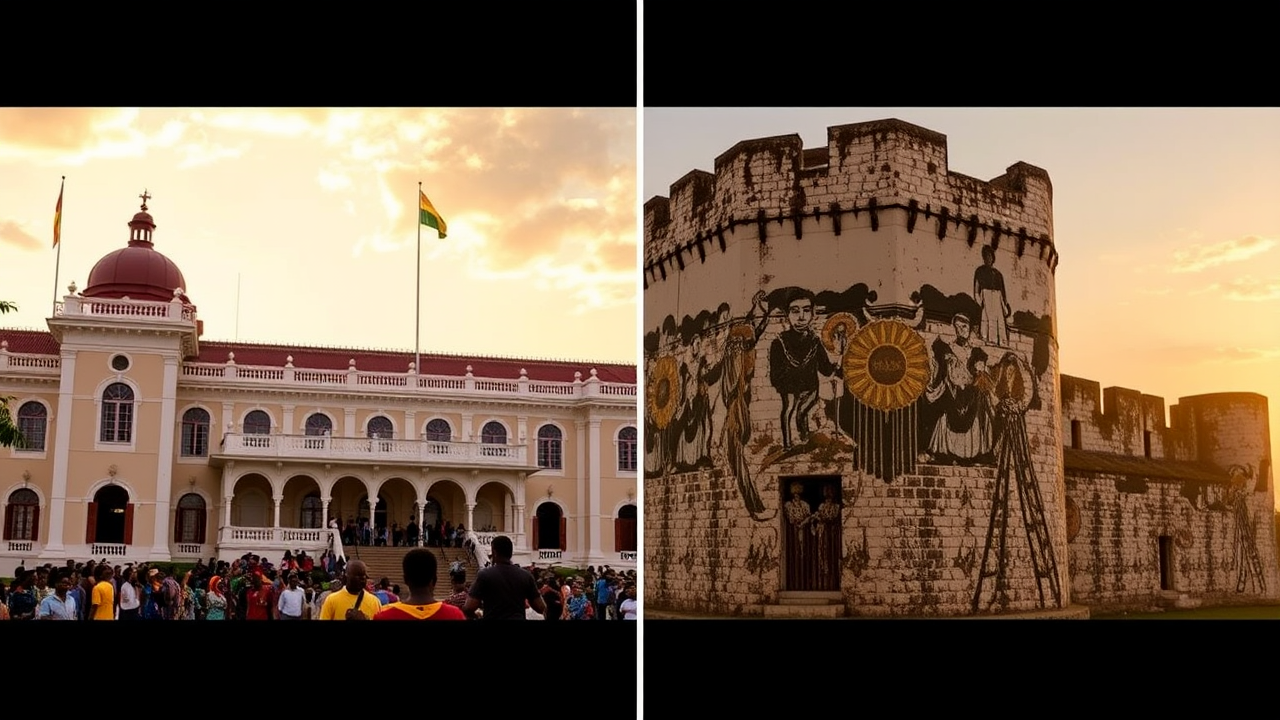# Discovering Kumasi and Elmina Castle: A Journey into Ghana’s Rich History and Culture
## Introduction
Ghana is a country bursting with history, culture, and deep-rooted traditions that offer travelers a unique window into Africa’s vibrant past. From the heart of the Ashanti Kingdom in Kumasi to the historical forts along the coast like Elmina Castle, every site tells a story of resilience, royalty, and suffering. As an explorer with a curiosity for authentic cultural experiences, I embarked on a journey to Ghana to immerse myself in its royal rituals, traditional festivals, and poignant historical landmarks. Let me take you through this unforgettable adventure that highlights Ghana’s significance in African history and its rich cultural tapestry.
—
## Kumasi: The Heartbeat of the Ashanti Kingdom
### The Royal City of Kumasi
Kumasi, often called the cultural capital of Ghana, is the spiritual and historical epicenter of the Ashanti people. Known for its vibrant markets, ornate royal palaces, and bustling streets, Kumasi is a city that pulses with tradition and history. The city is home to the Ashanti Empire’s spiritual and political leadership, making it a focal point for understanding Ghana’s royal heritage.
### Attending Traditional Funerals
One of the most profound experiences in Kumasi is witnessing traditional Ashanti funerals. These ceremonies are not just mournful events but powerful displays of respect and reverence for ancestors and community elders. When attending a funeral in Kumasi, you’re immersed in rituals that include ancestral prayers, drumming, dancing, and the wearing of elaborate traditional attire such as Kente cloth. These rituals serve to honor the deceased and reaffirm community bonds.
### The Akwasidae Festival: A Glimpse of Royal Splendor
A highlight of my visit was the Akwasidae Festival, celebrated every six weeks by the Ashanti people. This festival showcases the regal traditions, costumes, and ceremonies of the Ashanti royal family. It features colorful processions, royal drumming, and elaborate displays of Kente cloth and adornments. The festival exemplifies respect for ancestors and highlights the importance of traditional leadership in modern Ghana.
During the festivities, the Asantehene — the King of Ashanti — appears adorned in regal attire, surrounded by representatives of the traditional hierarchy. Visitors are welcomed into a world where history and culture are woven into every aspect, from the ornate crowns to the intricate dances. Attending the Akwasidae Festival provided a profound sense of connection to Ghana’s royal traditions and the resilience of its cultural identity.
—
## Elmina Castle: A Reflection on the Darker Chapters of History
### The Portuguese Roots of Elmina Castle
Traveling along Ghana’s coast, one cannot miss Elmina Castle, a UNESCO World Heritage Site that dates back to the late 15th century. Built by Portuguese traders in 1482, Elmina Castle is one of the oldest European structures in sub-Saharan Africa. Its strategic location made it a crucial hub for trade, especially in gold, slaves, and other goods.
### Exploring the Slave Dungeons and the ‘Door of No Return’
Walking through Elmina Castle today feels surreal — a poignant reminder of a dark chapter in human history. The slave dungeons, dark and cramped, housed thousands of Africans forcibly taken from their homelands. These chambers reveal the unimaginable suffering endured by countless individuals before their forced embarkation across the Atlantic.
One of the most emotionally charged experiences is standing at the ‘Door of No Return,’ the passage through which enslaved Africans were led onto ships bound for the Americas. It is a powerful symbol of loss, resilience, and the enduring human spirit. Reflecting on this history, I couldn’t help but feel a deep sense of gratitude and responsibility to remember these stories.
### Honoring the Past and Embracing the Future
Visiting Elmina Castle was both humbling and eye-opening. It reinforced the importance of confronting history honestly while celebrating African resilience and the enduring pursuit of freedom and dignity. Today, the castle hosts museums and memorials that educate visitors, honoring those who suffered and highlighting efforts to combat modern slavery.
—
## Why These Sites Matter: Connecting Past and Present
Ghana’s historical sites like Kumasi and Elmina Castle are more than tourist destinations; they are vital touchpoints that help us understand the complexity of African history and culture. Visiting these places provides insight into the sovereignty of the Ashanti Kingdom, traditional rituals that bind communities, and the profound impact of the transatlantic slave trade.
They serve as poignant reminders of resilience, identity, and the ongoing journey toward reconciliation and understanding. Experiencing Ghana firsthand enriched my appreciation for the strength of its people and the richness of its traditions.
—
## Final Thoughts: A Call to Explore Ghana’s Heritage
My journey through Kumasi and Elmina Castle was an enlightening experience that deepened my appreciation for African history and cultural diversity. Whether you’re drawn to royal ceremonies, colorful festivals, or historical sites that tell stories of struggles and triumphs, Ghana offers a treasure trove waiting to be explored.
If you’re passionate about discovering authentic cultural traditions and understanding the resilience of African communities, Ghana is an ideal destination. It’s a place where history is alive in every ritual, every dance, and every stone laid down centuries ago. Embark on your own adventure, and let Ghana’s vibrant heritage inspire you.
—
**Author:** Yara Idris
**Category:** History & Culture


No responses yet